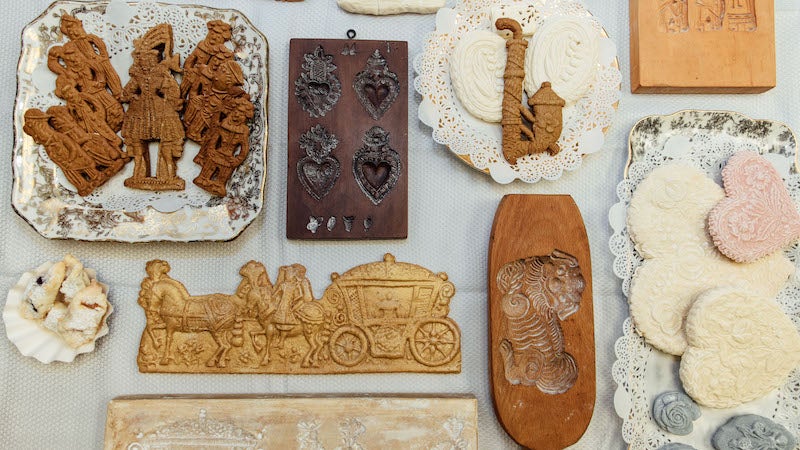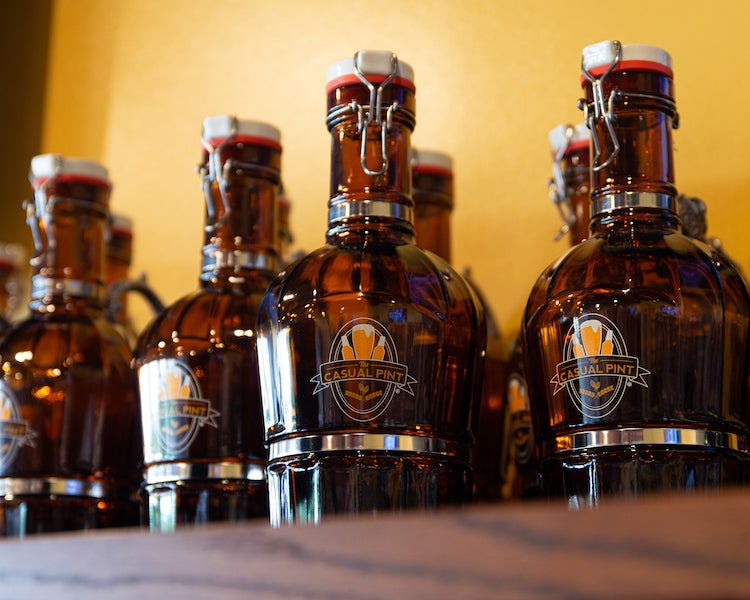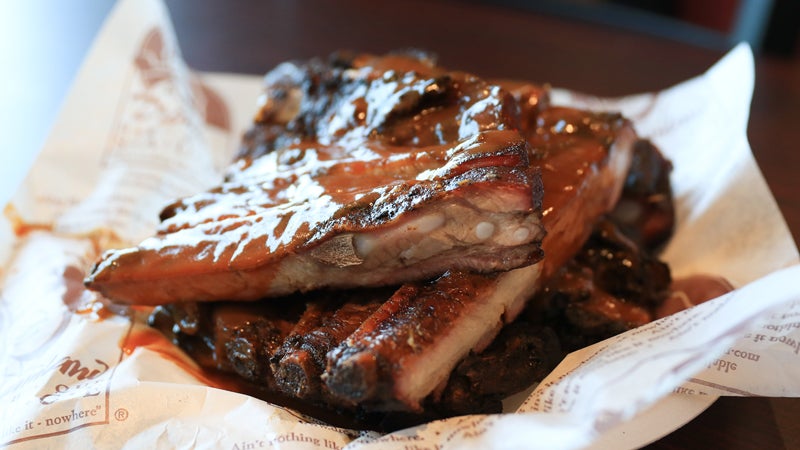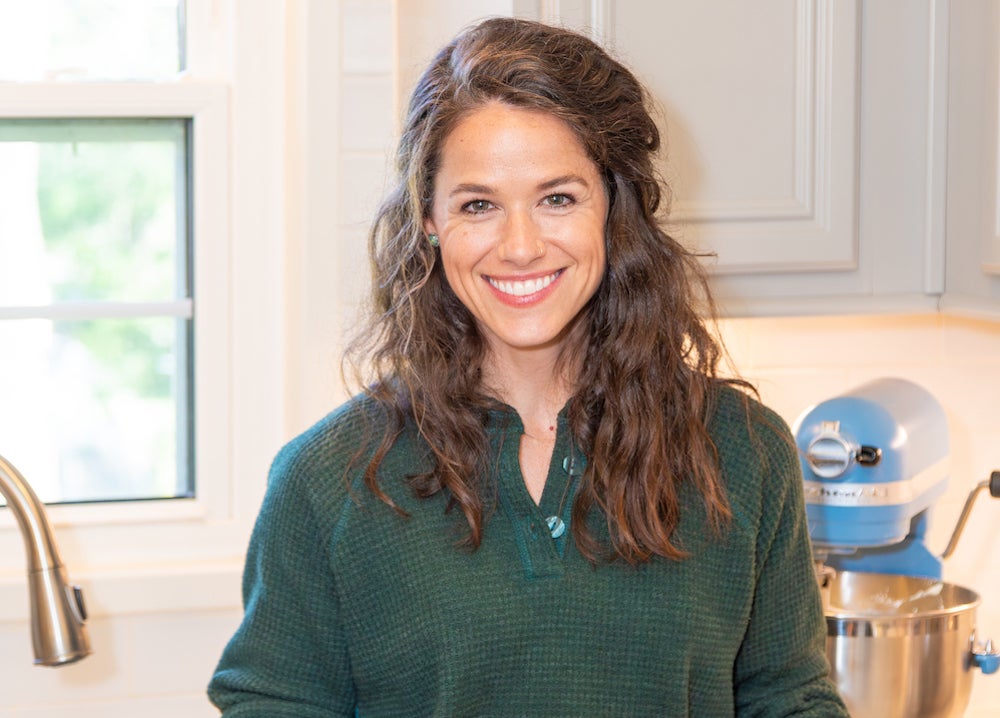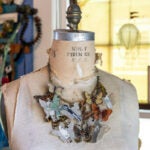By Aliza Baker
At first Cherri Jones didn’t quite know what to do with the perplexed looks that people kept giving her baked goods at a fall festival. It wasn’t until a shopper took a closer look at the intricately detailed teacakes and exclaimed, “Oh, you can eat these!” that Cherri knew she’d need to work on her marketing.
“I had to make a sign that said they are teacakes,” Cherri reminisces with a laugh. “I was like, ‘You can eat them! They aren’t soap or candles or decorative pieces.’”
It’s an easy mistake for the common eye. A glance at Cherri’s elegant artistic renderings of historical figures, architecture and flora carved with scrupulous detail might make you think their place is among the finest of china rather than for your taste buds.
The irony of the confusion is that cultures from all over the world have been eating these teacakes for hundreds of years. The history of teacakes and springerle (a German anise-flavored cookie with an embossed design on top made with a special rolling pin) is akin to a familial secret, passed along as a symbol of heritage for generations to come.
With her encyclopedic knowledge of the molds that give the teacakes their whimsical designs and customary baking techniques, Cherri didn’t want to keep it to herself. Her childhood was filled with “abstract, geometric springerle,” and as an adult she visited European markets with her husband. Now she’s fully qualified to write a book about the ancient significance of teacakes and springerle. Cherri’s a baker, though, not an author. So to better suit her talents, she opened Ginger Lily Southern Teacakes.
The ginger in the name symbolizes the traditional gingerbread used to create springerle. Lily is the name of Cherri’s grandmother, a Russian immigrant who lovingly passed along her baking knowledge to her grandchildren.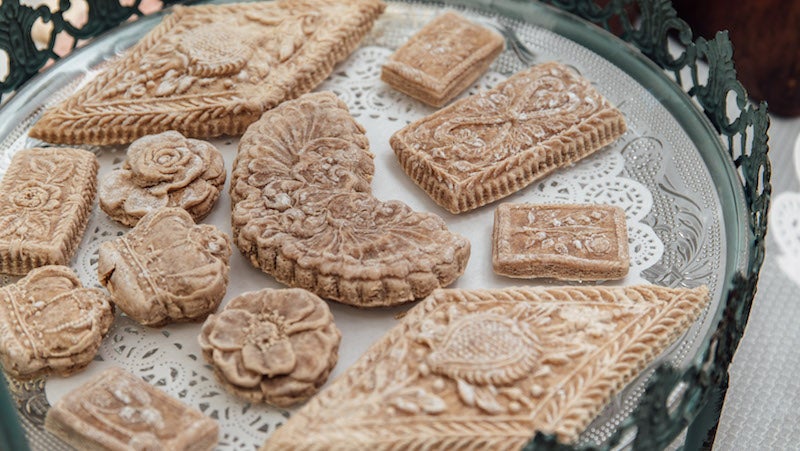
A blend of history and personal flair is the essence of Ginger Lily. “A typical springerle baker will make 30 of the same designs and it will be a set, but I like to create a mood on the plate,” Cherri says. “I look at them outside of the box.”
This magic happens in a shared commercial kitchen off of Lorna Road, where Cherri ventures out of the conventional teacake flavors of anis, vanilla or lemon and experiments with ones she’s never seen anyone else attempt, like coconut, matcha, mulberry and an assortment of coffees and teas.
Though she cherishes collecting historical molds that date back to as early as the 18th century, Cherri likes creating molds that hold personal significance to her customers.
“When one of my client wants teacakes for their wedding—if their grandmother who maybe passed away had a broach or a necklace that she loved and everyone associated it with her—I try to make molds from that piece of jewelry, and they can incorporate it into the wedding so it’s like she is there with them,” she says.
Customers from all over the country are drawn to the nostalgia of a warm kitchen on Christmas Eve, a mother removing freshly baked springerle out of the oven and the pleasant scent of gingerbread swirling around the room. Cherri takes it a step further to recreate those special memories for her customers too. She’ll ask a multitude of questions: “Where was your mother from?” or “Were the ones she made hard, chewy or soft?” Using these specific details as accurately as possible, she recreates the treats the customer remembers from their childhood.
This personal touch is not lost on her patrons. Food has a direct connection to the heart, and one single burst of flavor can often unlock memories buried so deeply that people have forgotten they were even there. “One lady (whose) grandmother has Alzheimer’s, (said) though she couldn’t remember much, she remembered the cookies that I made,” Cherri recalls.
But teacakes and springerle aren’t an exclusive club only for those who find sentimental value in them. Her most popular items are the German folk heart shaped teacakes and, interestingly enough, the skeleton cameo teacakes. As Cherri puts it, the 20-somethings all buy the skeletons, and everyone else goes with the hearts. She treasures customers who think her treats look “cool” just as much as those with a deeper connection to them.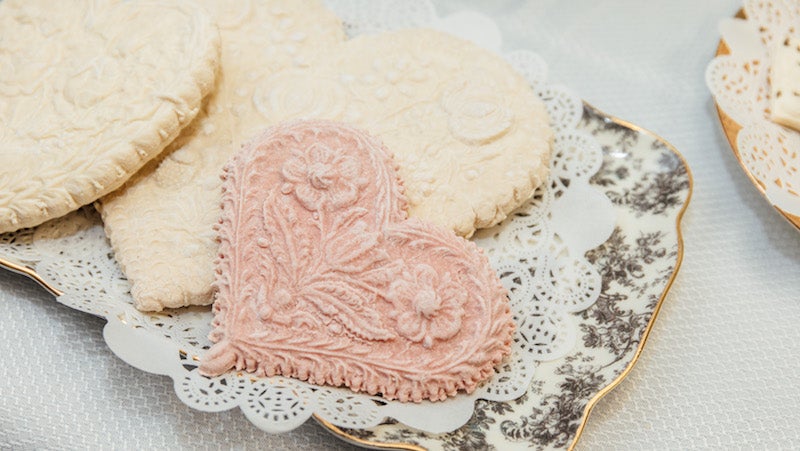
For Cherri, there’s a simplicity behind why she opened Ginger Lily Sweets, too. Despite her regular chats with teacake and springerle historians and her wealth of knowledge, her primary motivation behind her business is that, well, she loves to bake. She cherishes letting her 6-year-old grandson, who she adoringly calls her “aficionado,” or her husband, who ironically enough doesn’t have much of a sweet tooth, sample her work. Just like the mold designs, it’s the small details that make it worthwhile for her.
Despite her thoughts constantly swirling with traditions from the past, Cherri’s looking ahead at the future as well. Her primary goal for Ginger Lily is to eventually have her own retail space so that she can expand her menu to items that aren’t able to be shipped. Other than that she’s just proud of how far her business has come in the two years since it’s been open.
Although Cherri’s teacakes and springerle are full of historical nuance, what’s not subtle is their fairytale-like beauty. But for anyone who is hesitant to take a taste like at the fall market, take Cherri’s husband Reginald’s advice: “Just flip them over to the back side!”
Ginger Lily Southern Teacakes Online
Teacake, Springerle, Gingerbread and Kolackzi Pastries
gingerlilysweets.business.site
Instagram
@gingerlilysweets
Cracking the Code
Certain teacake and springerle designs contain symbolism that dates back for centuries.
- Pomegranates or roses: Weddings
- Pipes: Wisdom (typically given to an older man or father figure)
- Man riding rooster or wreath of flowers: Courtship
- Flaming heart: Love
- Biblical stories: During medieval times when most people were illiterate, they used teacakes to tell the stories.

